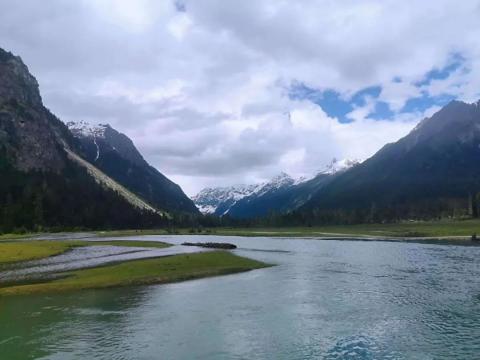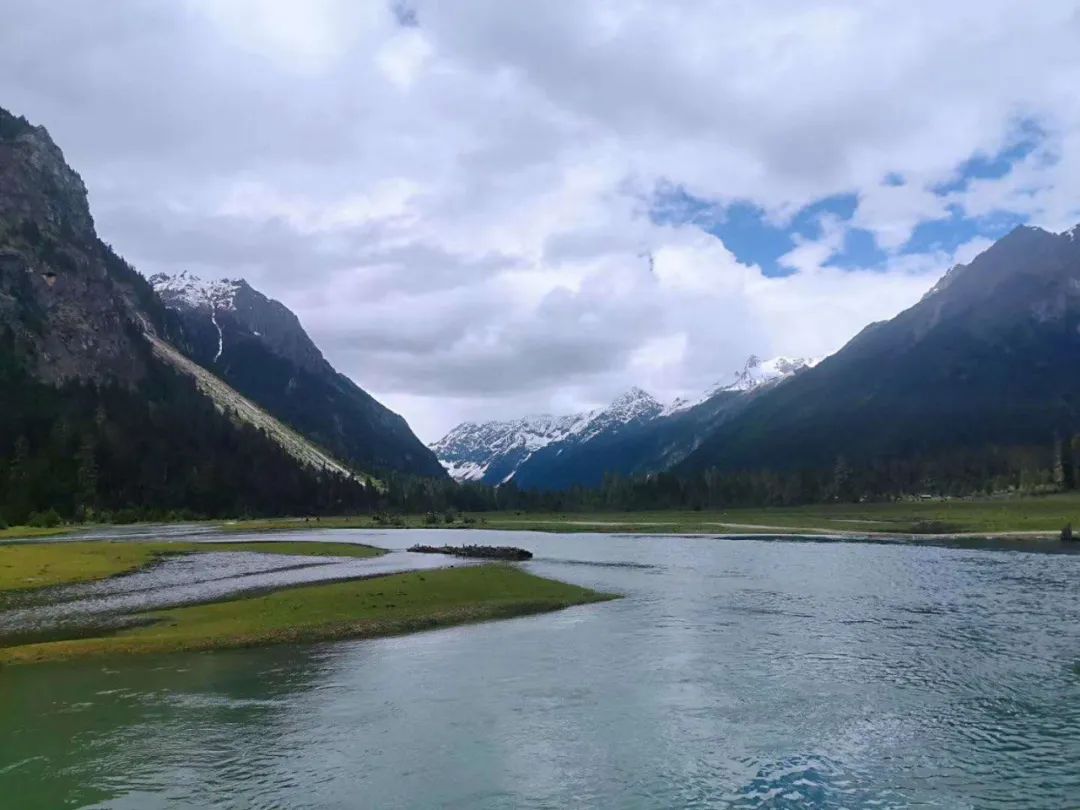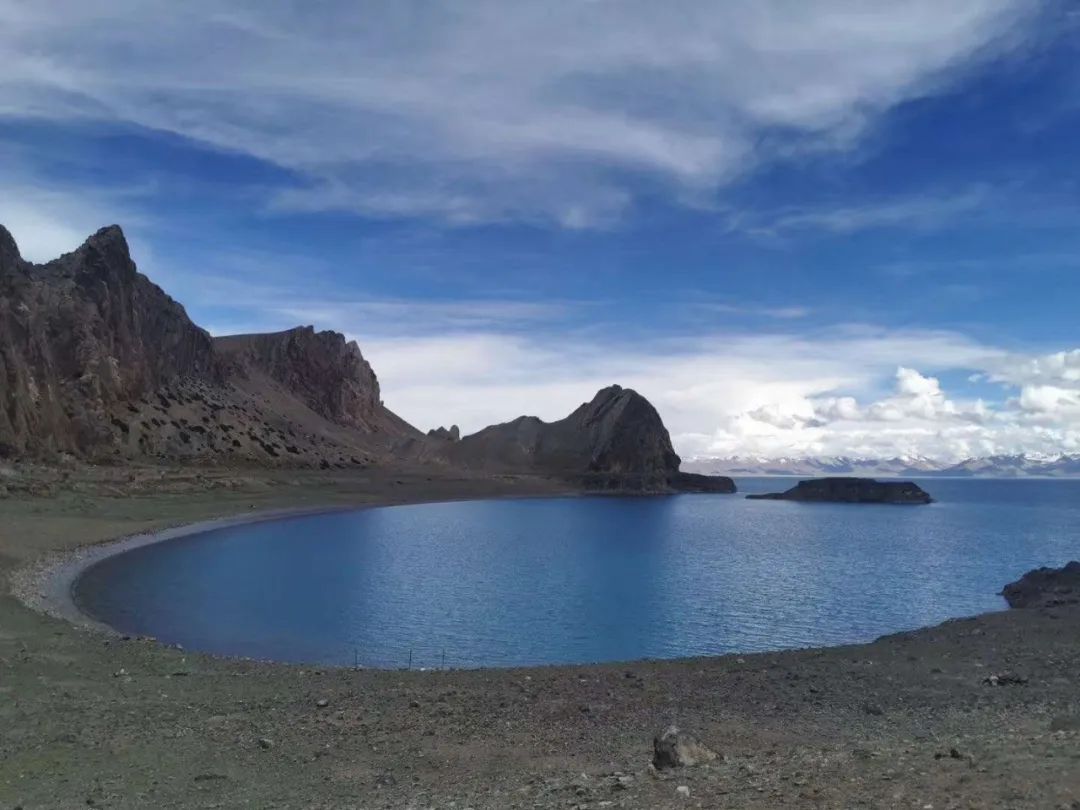

Meeting Tibet (Part 10)
Tibetan culture and customs
Tibetans are an ancient plateau nation, and the first characteristic of Tibetan culture is its regional nature. Tibet is located on the roof of the world, with an average altitude of more than 3,000 meters. The Himalayas, Gangdise Mountains, and Nyenchen Tanglha Mountains traverse the entire territory. It has the highest mountain in the world - Mount Everest, the highest lake in the world - Lake Namtso, the highest river in the world - the Brahmaputra River, and the world's broadest grassland - the Qiangtang Grassland. There are rolling mountains, crisscrossing rivers, lakes and green grass. The unique natural geographical environment has created a unique plateau culture. As a result, a distinctive pastoral culture, or nomadic culture, has been formed in the vast area of Tibet.
Language : Tibetans have their own language and writing. The current Tibetan script is a pinyin script developed in the early seventh century based on ancient Sanskrit and Western scripts. Tibetan punctuation marks are simple in shape and have very few types, and their usage rules are also different from the punctuation marks in other languages.
Literature: Tibetan literature is rich and colorful, ranking among the forefront of China’s ethnic minorities in terms of quantity. "The Legend of King Gesar" is a heroic epic in folk rap style. It is the longest rap epic in the known world. The Tibetan literary classic "The Love Song of Tsangyang Gyatso" has also become world-renowned.
Clothing: Tibetan clothing is a long and beautiful cultural landscape on the Qinghai-Tibet Plateau, and the craftsmanship, life taste, aesthetic concepts, moral ethics, and religious beliefs contained in it can become a living fossil for the study of Tibetan culture. Tibetan costumes for both men and women are still intact. The basic characteristics of Tibetan clothing are long sleeves, wide waist, long skirt, and long boots. Different regions have different costumes, showing a colorful style. Tibetan costumes are colorful, and their outstanding features are reflected in the color matching and composition. During theatrical performances and festivals, all kinds of brightly colored Tibetan costumes will become the focus. Tibetan boots are one of the important features of Tibetan clothing. In addition, Tibetan men and women pay special attention to jewelry. The materials of jewelry include silver, gold, pearls, agate, jade, jade, coral, amber, etc. They are widely used in headwear, hair accessories, earrings, necklaces, waist accessories and rings.
Tibetan calendar : The Tibetan calendar is a Tibetan calendar created by the Tibetan ancestors. It is different from the Han calendar. The Tibetan calendar has three major elements, including the phenological calendar inherent in Tibetan culture, the Kalachakra calendar introduced from India, and the chronological calendar introduced by the Han people. The Tibetan almanac that can be verified by existing history first appeared in the 13th century (Yuan Dynasty). By the 19th century, the compilation of the Tibetan almanac had become more and more complete.
Etiquette : Tibetans pay great attention to etiquette. In daily life, they have different ways of bowing to elders and ordinary people. In some areas, clasping hands and bowing are used at the same time. Offering hada is the highest standard of Tibetan etiquette for hospitality, expressing warm welcome and sincere respect to guests.
Tibetan cuisine : Tibetan cuisine is one of the genres in the Chinese catering series, with a long history and rich varieties. Tibetan meals are divided into three categories: staple food, dishes and soups. Tibetans have their own unique food structure and eating habits. Butter, tea, tsampa, and beef and mutton are known as the "four treasures" of Tibetan diet. In addition, there are also highland barley wine and various dairy products. Dried meat is a very unique food in Tibet.
Wine culture : Tibetan highland barley wine is brewed directly from highland barley and has a low alcohol content. Tibetan people, both men and women, old and young, like to drink it. It is a must-have for festive celebrations.
Tea culture : Butter tea is an indispensable drink for Tibetans. Making butter tea requires butter, salt and tea. Butter is cream extracted from cow and goat milk. Golden butter extracted from yak milk in summer is the best. , extracted from goat milk, is pure white. In addition, there are also clear tea, sweet tea, etc.
Festival culture : Tibetan festivals are the most important expression of Tibetan culture. There are many Tibetan festivals, basically every month. The first month of the Tibetan calendar is the month with the most and most solemn festivals. In this month, festivals are celebrated almost every day. The Tibetan New Year is a traditional festival of the Tibetan people. During the Tibetan New Year, in squares or open grasslands, everyone dances Guozhuang dance and Xianzi dance in circles. Accompanied by musical instruments such as lyres, cymbals, gongs, etc., they hold hands and step on the ground to celebrate the festival and sing joyfully. and, the children set off firecrackers, and the whole area was immersed in a joyful, festive and peaceful festival atmosphere. Singing Tibetan opera and dancing Guozhuang and Xianzi dances in urban and rural areas. In pastoral areas, herders light bonfires and sing and dance all night long. In addition, there are bathing festival, fruit-watching festival, mountain-turning festival, flower-picking festival, herdsmen’s festival, flower-viewing festival, horse racing meeting, Linka festival and so on.
Architectural culture : The numerous mountains and boulders in Tibet provide sufficient material foundation for Tibetan architectural features. Whether it is palace buildings, temple buildings, or urban and rural residences, stone is used as the main building material, which has become a major feature of Tibetan architectural culture. Folk residence is the most popular type of building, and its shape is restricted by geographical environment, building materials, construction technology, folk customs, living habits and other factors. Diaofang is a relatively distinctive form of residential architecture in Tibet. The yak tent is a typical housing in pastoral areas. Although this kind of tent is simple, the Pulu made of ox down is thick and not afraid of wind, rain and heavy snow, and it is also convenient for herders to move at any time.
Grassland pageant : Tibetans are enthusiastic and love singing, dancing and sports activities. In addition to singing, dancing and entertaining themselves during grazing and holidays, various joyful grassland pageants are held every summer and autumn in various places. At this time, people will dress up in festive costumes, bring tents, catch up with cattle and sheep, ride horses, and gather together to sing, dance, race horses, archery, tug-of-war, mountain climbing, wrestling, yak racing, exchange supplies, etc. The scene is spectacular and lively.
Song and dance : Tibetans are good at singing and dancing. The melody of the song is ups and downs, and the lyrics are appropriate to the rhyme. When singing, they can also be accompanied by various dances. The dances are beautiful, including solo dance, duet dance and group dance, or dancing with upper body and arms. Or dance with the lower body and legs, and tap dance is the most distinctive. Some dances are accompanied by various musical instruments.

